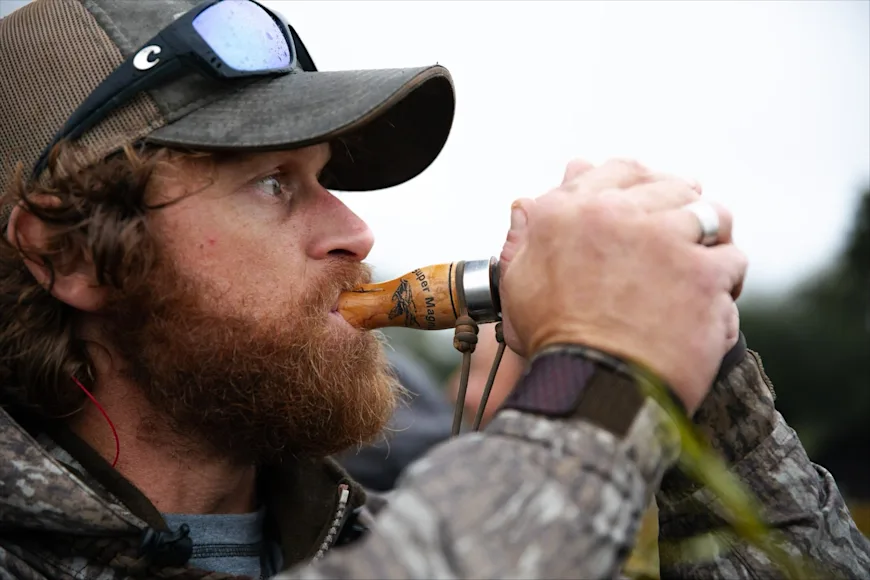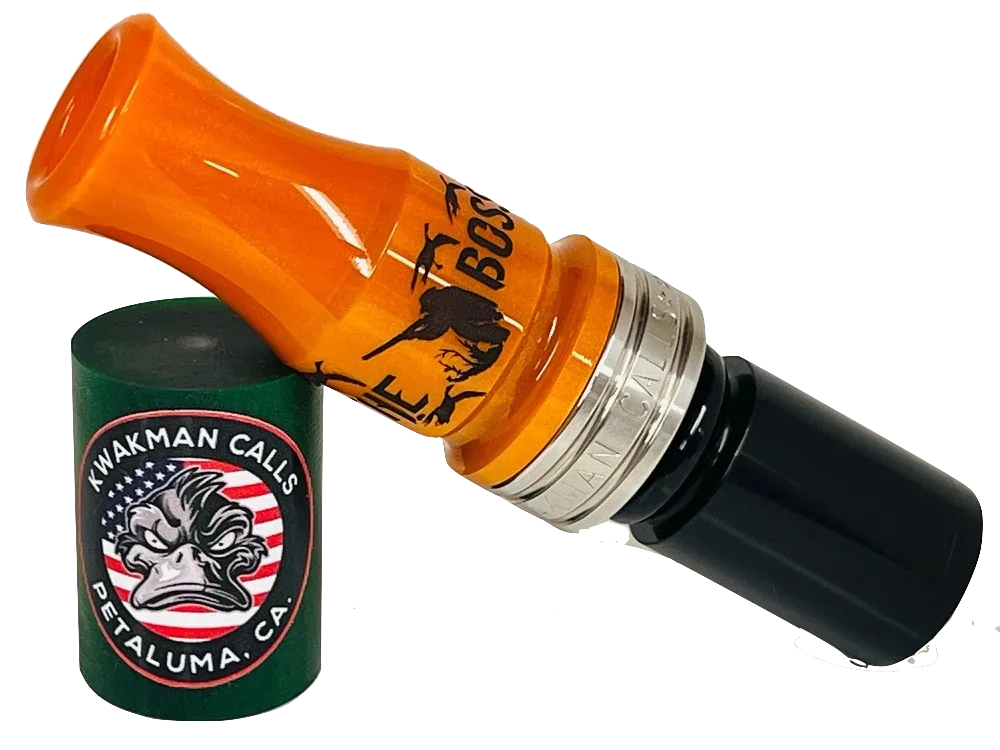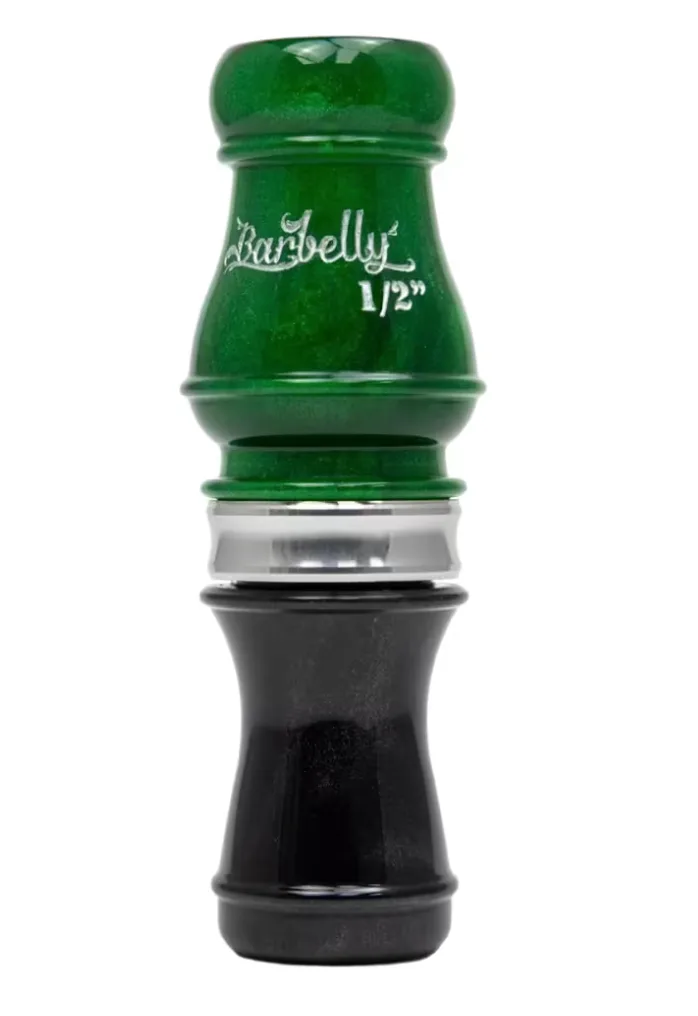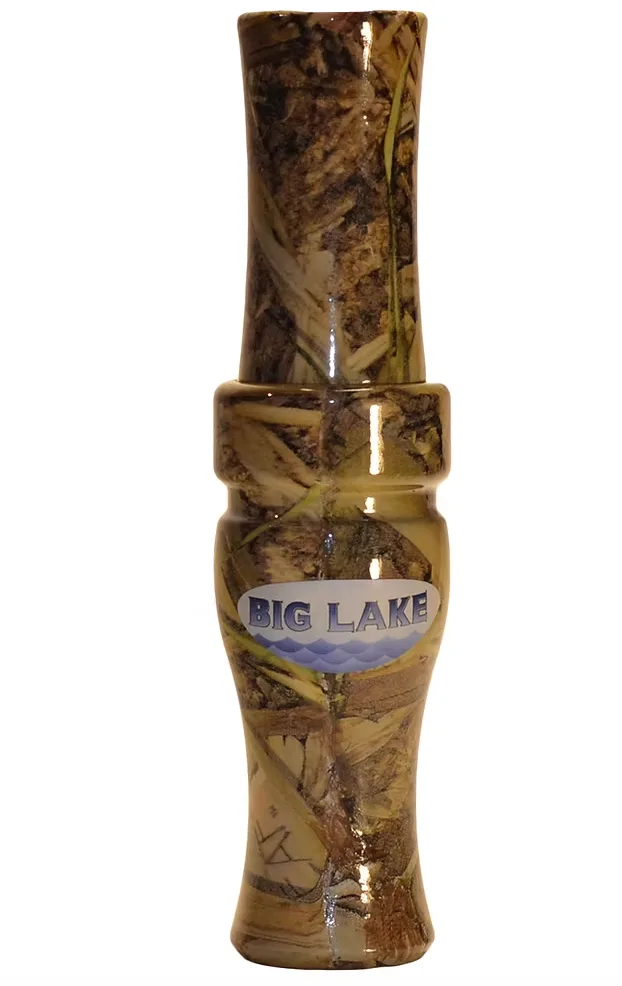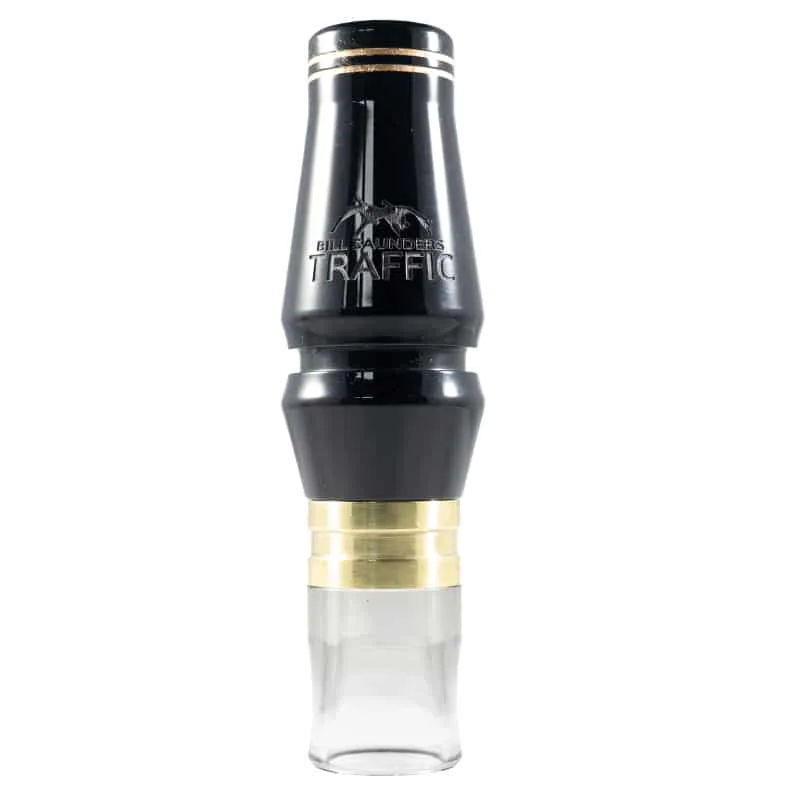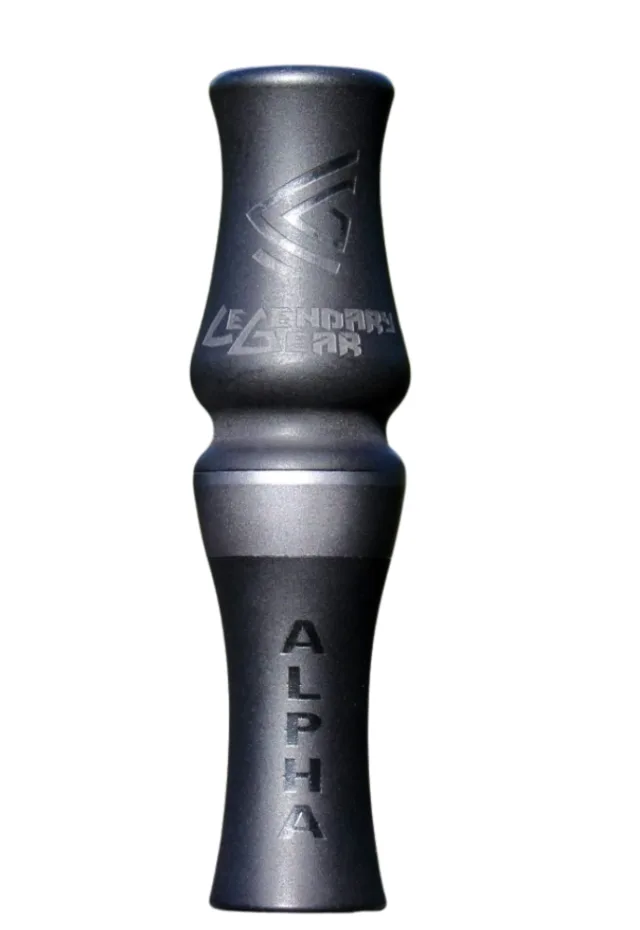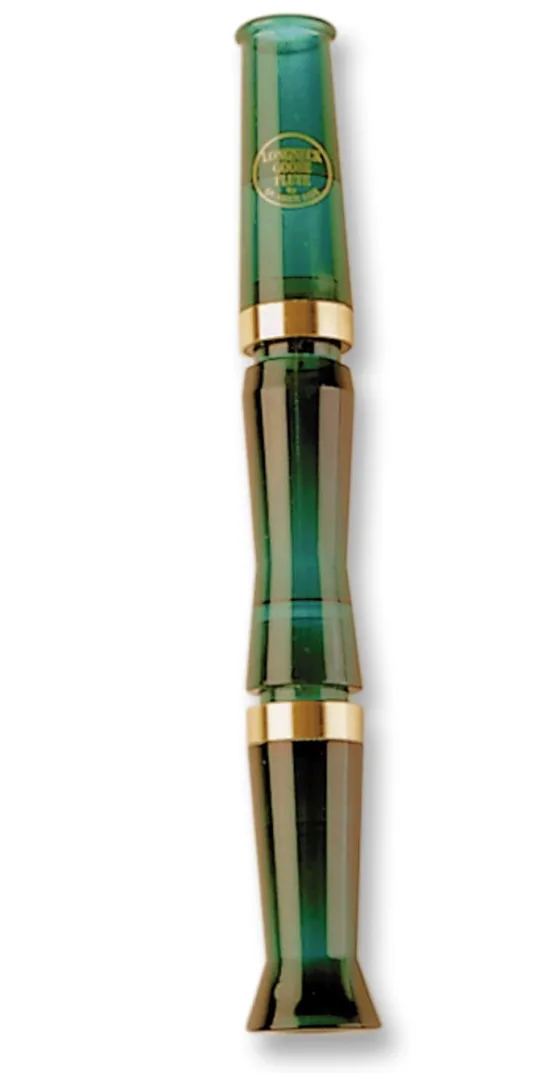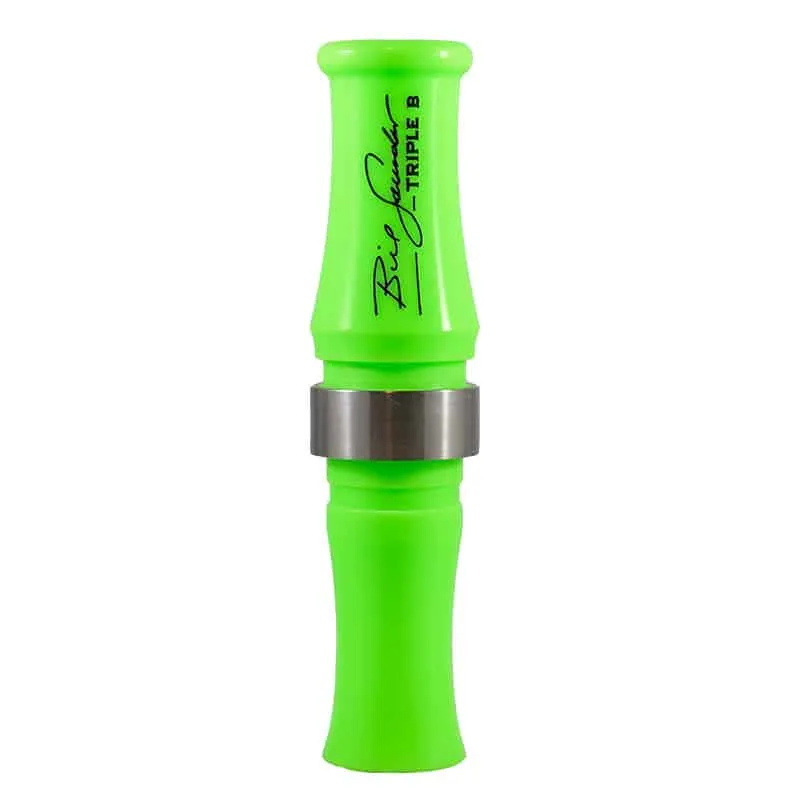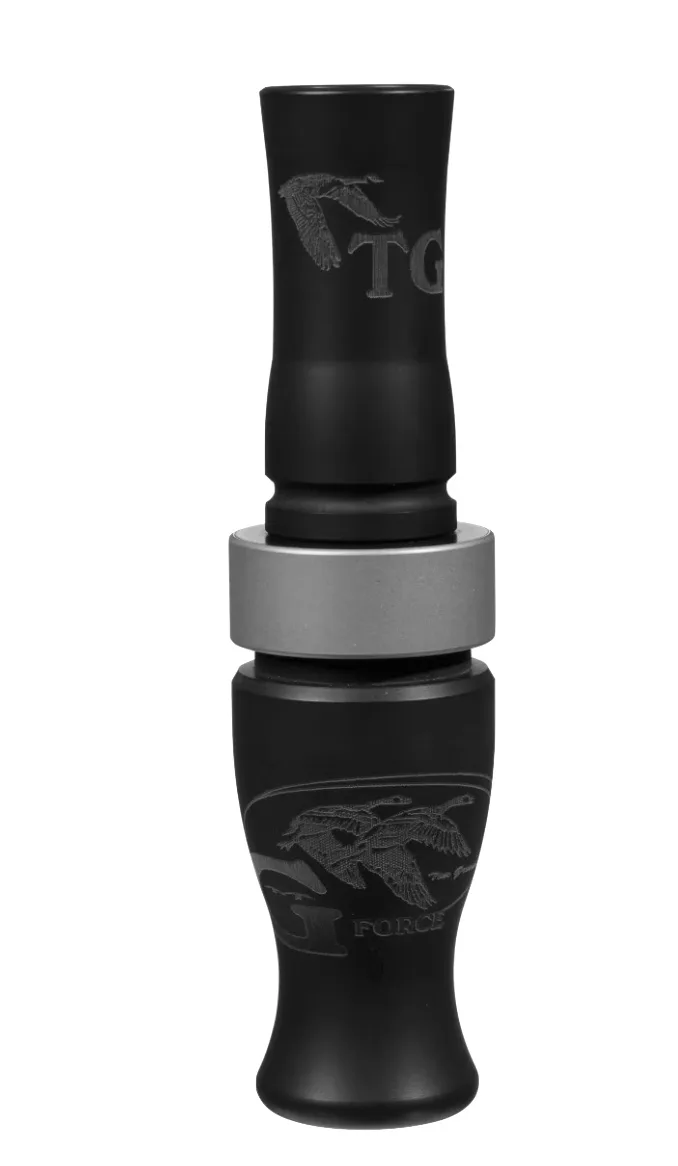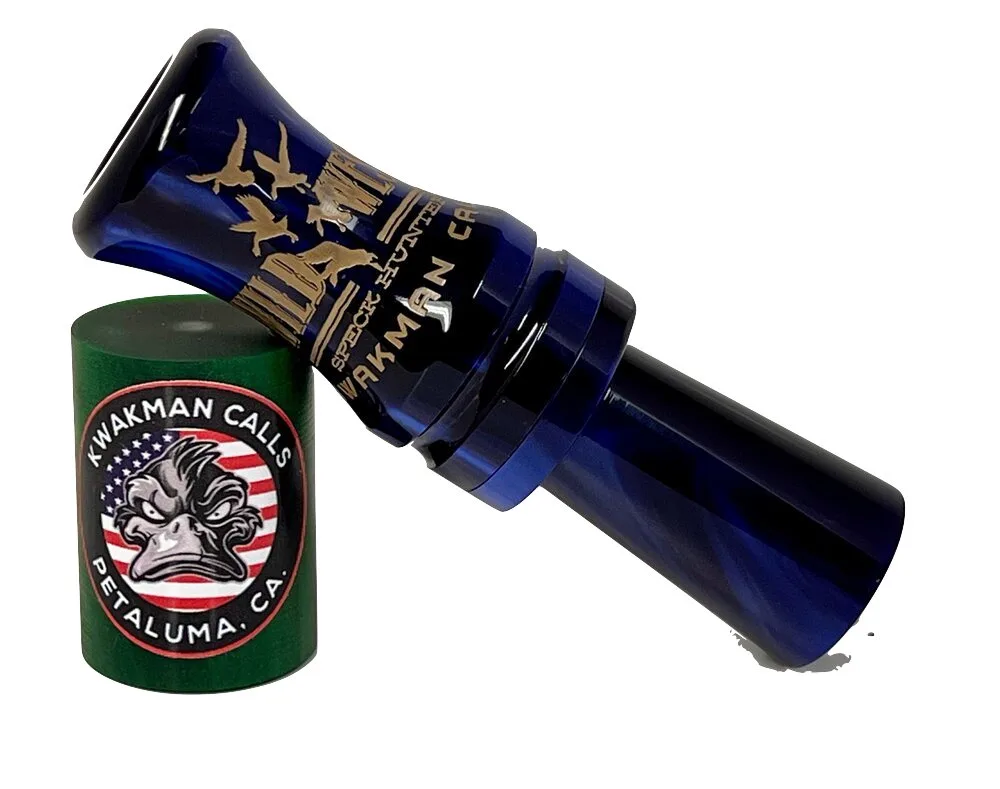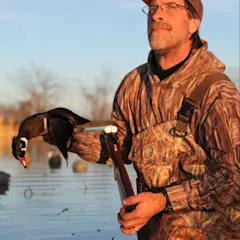We may earn revenue from the products available on this page and participate in affiliate programs. Learn more ›
When it comes to calling geese, Canada geese in particular, I’m awful short of fancy. I’ve heard fancy, know what it sounds like, and hunt with people who can sound like a flock of geese. That said, I can hold my own when it comes to blowing a goose call. I do the simple stuff well, and as it turns out, that's really all you need to kill honkers.
Today’s goose calls, and the short reeds in particular, have progressed to the point that damn near anyone with a desire to learn, improve, and ultimately sound real afield can find a call geared for them. Just like expert callers can find specialty calls to dial in exactly how they want to sound in the blind. So I rounded up a handful of the best goose calls on the market for any skill level. Here are some of the best goose calls you can buy in 2025.
Best Overall: Kwakman Calls The Boss 2.0
Best Speck Call: Rich ‘n Tone Barbelly
Most Custom: Bill Saunders Traffic
Best Budget: Big Lake Outdoor Products Acrylic Goose Call
The Rest of the Best Goose Calls

Best Overall: Kwakman Calls The Boss 2.0
Pros
User-friendly
Versatile range from high to low
Great for Lessers up to big honkers
Minimal back-pressure required
Double O-ring design
Cons
Expensive
A little touchy
Rich Peterson, owner of Kwakman Calls, began his career as a tool and die maker, working alongside his father, George, who founded the business in 1946. The Boss 2.0 is Peterson's acrylic short reed, which is not only one of the best-sounding calls on the market but also extremely user-friendly. The Boss features built-in back pressure, making it easier to drive from the start. It has a solid double O-ring design with a stainless steel band. Hunters have six colors to choose from, but I like the orange/pearl pattern the best. The only downside to this call is that it's expensive, but it has an excellent range and can be used across the board from Lesser to giant Canada geese.
Best Speck Call: Rich ‘n Tone Barbelly
Pros
Built-in back pressure
User-friendly
Ergonomic design
Good looks
Cons
Expensive
Rich-N-Tone is a powerhouse when it comes to duck and goose, and the Barbelly specklebelly call is another example of why RNT is so popular among hunters. This call is a favorite for serious speck hunters. The Barbelly does it all, from the subtlest ground noise and on-the-water murmurs to long-range yodels and yelps. It features built-in back pressure that makes the caller's job easier and individually crafted Delrin guts that help the call sound so good. The ergonomics of this call are excellent, too. It is comfortable in the hand and looks great, which is important because if you're going to spend $165 on a specklebelly call, it better be sexy.
Best Custom: Bill Saunders Traffic
Pros
Aesthetically pleasing
Five color choices, plus a limited run of ash burl for 2025
Incredibly versatile for all subspecies of Canada geese
Cons
Expensive
Takes time to learn
The Saunders name has been a mainstay among goose hunters for more than two decades. Originally from Wisconsin, Saunders moved to Washington in the 1990s, began building duck and goose calls, and continued calling on stage. He’s retired from competition now, but still makes some of the best calls out there, like the Traffic call.
It is a do-it-all short reed that can run the subspecies gamut, from big honkers to lessers to cacklers. Saunders claims that the Traffic can "make a pretty nasty snow goose call." The original Traffic comes in five colors, but for 2025, Saunders is offering a limited run of the call in a gorgeous ash burl. This call sounds amazing, looks amazing, and will last for years. The Traffic will run you at least $150, landing it in the premium category for calls. But all things considered, that's not bad for a custom call from an all-time legend.
Best Budget: Big Lake Outdoor Products Acrylic Goose Call
Pros
Affodable
Excellent service after the sale
Clean look
Multiple colors
Cons
Only offered in one color
I’ve worked with Hugh McLaurin, the gentleman behind Big Lake Outdoor Products, in the past, and I’ll say he makes a fine product at an affordable price. Case in point, his latest creation, the acrylic Perfect Honker short reed. For $40, you get a camo-dipped, no-frills call. I took mine out of the box, stepped onto the back porch, and quickly convinced myself that ‘yes, I can kill a goose with that.’ It comes in the vintage Bottomland pattern here, but different higher-end versions can be had, complete with a shiny silver band, for $99.
The Rest of the Best Goose Calls
Legendary Gear Alpha
Pros
User-friendly short reed
Hand-tuned by the craftsman
Wide range and volume
Cons
Takes time to dial in
I’ve known George Lynch for close to 30 years now, and he’s always been extremely proud of the fact that he brings the very best of his talents and abilities to the stage in the form of his Legendary Gear call lineup. Lynch’s short reed Alpha has everything I’m looking for in a goose call. It blows easily, sounds true, and looks damn nice. Plus, it has a great range and volume when you need it. And with a price tag ranging from $89 to $159, the Alpha doesn’t put a dent in most wallets. Each call is hand-tuned by Lynch himself—light, medium, or heavy—depending on the customer’s preference and skill level.
Quaker Boy’s Longneck Goose Flute
Pros
Easy to use
Indestructible build
Self-tunable Mylar reed
Great for new callers
Affordable
Cons
Limited range
Chris Kirby, son of the late and legendary call-maker, Dick Kirby, operates Quaker Boy Game Calls out of Orchard Park, New York. Among Kirby’s long list of outdoor products is the Longneck Goose Flute, which, as the moniker implies, is a simple and ridiculously user-friendly flute-style goose call. The best part about this call is that anyone, regardless of skill level, can use it effectively with minimal practice. The Longneck is indeed long, but the design helps create those deep, mellow HER-ONKS that Canada geese don’t often hear in today’s short reed craze.
Bill Saunders Triple B Goose Call
Pros
Incredibly user-friendly short reed
Wide range of goose vocabulary
Easy learning curve
Excellent service and instruction
Hand-tuned
Cons
Exoensive
Saunders sent me one of the first Triple B short reeds he built a couple of years back. Right out of the box, I felt like I had truly upped my game. In fact, the first Western Canada I spoke to turned 90 degrees and locked up without hesitation. Scientific? No, but I was sold.
I would rate the Triple B a 10 out of 10 on the user-friendliness Scale. It's not flute call easy, but it is easy to blow out of the box. Still, the Triple B is a call that experienced waterfowlers can grow into throughout their field careers. I’m partial to Saunders’ ‘Game Used Guts,’ meaning the insert workings have some time on them, making them (again) more user-friendly. However, Saunders does field the option of slipping Standard (new/unused) guts in the call if that’s what one prefers.
Tim Grounds’ G-Force
Pros
Built by a legend in the industry
User-friendly
Built-in buzz
Extremely versatile and wide-ranging
Black/Hedge combo is incredibly attractive (if that matters)
Cons
Expensive
The G-Force is a tremendous short reed call that Hunter Grounds refers to as the “big brother" of another recognized winner in the Grounds line, the G Overhauler. With its fine lines and Triple Crown ‘Worn-In’ guts, the G-Force, says Grounds, “is a call built to fit all levels of experience." It ranges from loud, full honks to low, bottom-end buzzy chuckles. It is a call for every style of goose hunter.
Kwakman Calls’ Wild West Speck Hunter
Pros
Made in Petaluma, California – All USA
Requires little back pressure
Shallow learning curve
Can be run one-handed (allowing for a flag or coffee cup in the other!)
Affordable
Cons
White-front vocabulary is unique, so there’s some learning involved
Specklebelly populations are on the rise throughout the western Pacific Flyway. And in response to this increase, more and more hunters are searching for a call that’s easy to use, affordable, and sounds…well, just like a specklebelly. Thanks to owner Rich Peterson and his California-based Kwakman Calls, the search might very well be over.
Designed as a collaborative effort by Peterson and outfitter Brett Overshiner, the Wild West Speck Hunter features a shortened barrel and an open (flared) exhaust. This translates into a need for less air to be introduced into the call, along with minimal back pressure required. “I wanted something I could comfortably blow all day long while guiding without wearing me out or breaking reeds,” said Overshiner. “You can get super quiet [on the Speck Hunter] or super loud. I’d say it’s the easiest speck call on the market, and you can reproduce every word in the specklebelly’s vocabulary.”
What To Consider When Choosing Goose Calls
The very first consideration when buying a goose call is your calling skill level. If you’re new to goose calling, a call on the upper end of the user-friendliness scale, such as a flute-style, might be best. As you progress in your education, a call with more versatility, like a short reed style, would be a natural choice. Some other factors you should consider include the following:
Short Reed vs. Flute Style vs. Hybrids
Flute-style goose calls require little, if any, back pressure in order to make realistic goose sounds. In the most elemental sense, you blow in one end, and honks, clucks, and moans come out the other. Short reeds demand the coordination of air delivery and back pressure to sound right and they aren’t as forgiving as flutes. A mix of both styles, hybrid calls offer ease of use with acoustic versatility.
Price
You can spend $25 on a production flute, or you can drop $200 plus on a custom short reed. I’ve used poor-sounding, expensive calls, as well as realistic-sounding budget instruments. Buy what you’re comfortable with and what your wallet will allow.
Material
Materials options will include some species of wood (such as hedge, walnut, or cocobolo), polycarbonate (a.k.a. poly), plastic, and acrylic. Wood offers a deep, rich tone but is more fragile than plastics. Poly calls are a great middle-of-the-road option—they’re affordable, durable, and sound good. Acrylic calls are a bit more expensive, as they’re hand-turned versus molded, but they offer more in terms of volume and sharp-edged sound quality compared to poly.
Custom vs. Production
A production goose call is a mass-produced call. The price is going to be right, and the call might sound great. Custom calls cost more, but you’re getting a work of art that will be hand-tuned to sound as realistic as possible.
Availability of Instruction
Does the goose call maker offer any instructions on how to use their product correctly? Are videos available? Can you call and speak with the man who made the call and ask, “What the hell am I doing wrong?”
Service After the Sale
If I have a problem with a call, I’d like to be able to contact the manufacturer, describe the problem, and ask if there’s a fix. Does your potential call-maker provide that service? Can you send the call back annually for re-tuning?
FAQs
Q: What’s the easiest goose call to use?
A: A flute-style goose call is the easiest to use: you just blow in it, and goose sounds—and often, pretty good goose sounds—come out. There’s still a learning curve, but it’s nothing compared to a hybrid or short reed call. And, if you’re wondering, flute calls sound really good, especially if you’re working the bigger deeper-pitched Canada subspecies like Westerns or Midwest Giants.
Q: How many goose calls do I need?
A: Currently, I have three goose calls, along with a trio of duck calls and a widgeon/pintail whistle, on my working lanyard. Two of the goose calls are Canada goose calls, and the third is my Grounds snow/speck calls. Does a waterfowler need three goose calls? Absolutely not, as one that you can blow well is plenty. Ability and confidence is what you need. A single call you can use well is better than a dozen you can’t.
Q: What does it mean when you see a goose alone?
A: A single goose can make for a great harvest opportunity. Geese, like ducks, are gregarious by nature, wanting for the most part, the company of others. So, when a goose is alone, a combination of a well-set decoy spread and good calling can often convince that lone bird to come in.

